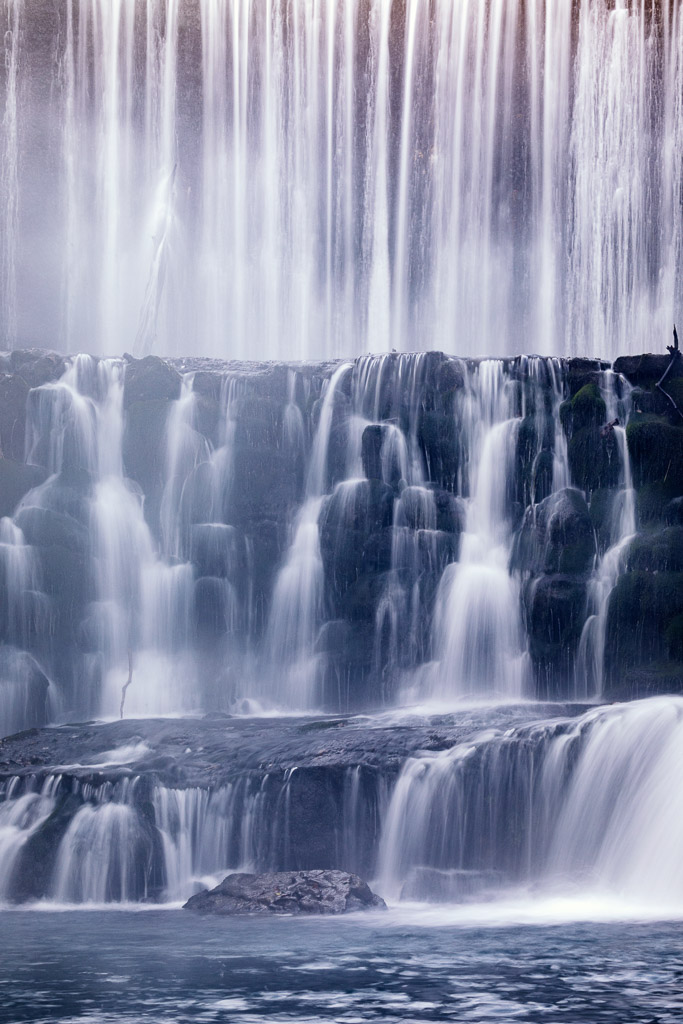After photographing the autumn leaves along the path to the Blanchard Springs waterfall, I made my way to Mirror Lake. Mirror Lake was created in the 1930s when the Civilian Conservation Corps dammed the creek that flows from Blanchard Springs Caverns.
The dam creates an incredible waterfall. When I visited Blanchard Springs about a year ago, I discovered the waterfall and wanted to shoot it. However, I had not expected nor had I prepared for the heavy rain that began to fall just as I arrived. From the boardwalk above the dam, I could see the trail that led to the bottom of the waterfall. I tried, very briefly, to find the trailhead, but it didn’t take very long before I was tired of walking around in the rain.
The weather during this trip was much better, and I was able to find the start of the trail. The trail runs along the edge of the creek, passes the remains of an old grist mill, and ends at the bottom of the dam and waterfall. Arriving at the waterfall, I was stunned by what stood before me: an incredible three-tiered cascade. It was simply amazing.
The exact location I wanted to shoot from was almost in the center of the creek. Getting to it required some very careful footwork as I worked my across several small, wet, slippery, and wobbly stepping stones. With the temperature just above the freezing mark, the last thing I wanted to have happen was for my foot, or feet, to slip into the creek.
Upon getting to my shooting location, I found that it wasn’t very spacious either and finding a way to keep myself steady while also setting my gear down and setting up my tripod and camera was very tricky. It became even trickier when I needed to change lenses.
I was finally able to get everything coordinated and began shooting the waterfall. Using both my 24-70mm and 100-400mm lenses at various focal lengths from wide angle to telephoto, I tried to capture a number of different compositions from my little shooting platform. Of the images I got, this is my favorite because it clearly captures the three tiers of the waterfall.
To create this final image, I used Lightroom to increase the exposure, add contrast, enhance the clarity, and add some vibrance and saturation. Using the dehaze slider, I very carefully reduced the amount of fog and mist that was created by the temperature difference between the water and the air. Finally, the scene was illuminated by skylight which created a distinctly blue tone that I didn’t find appealing. To reduce this blue tone, I made a final adjustment with the white balance slider to increase the color temperature and create a slightly warmer image.
My settings were 100mm, 0.8 sec, f/22, 100 ISO.
